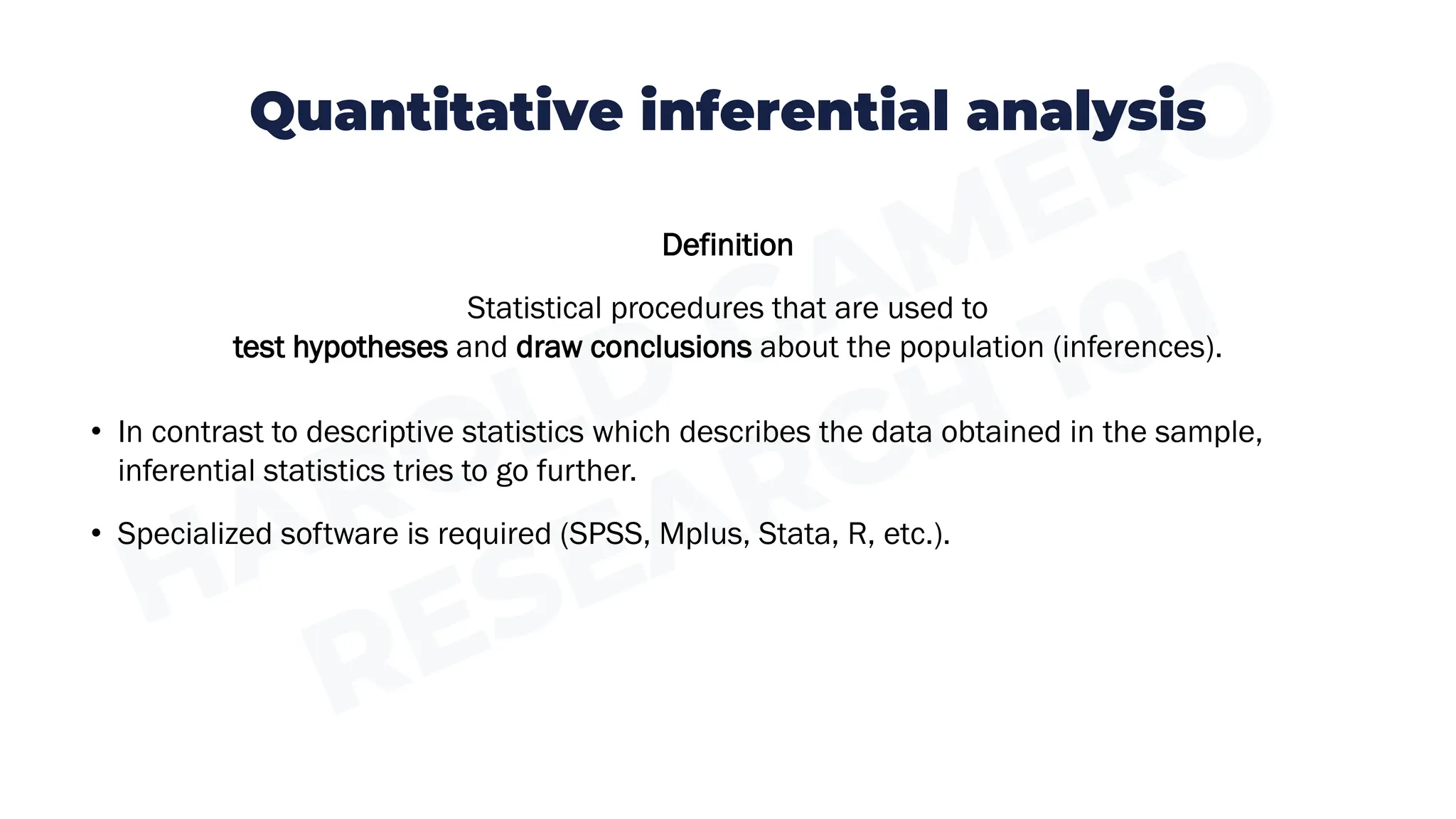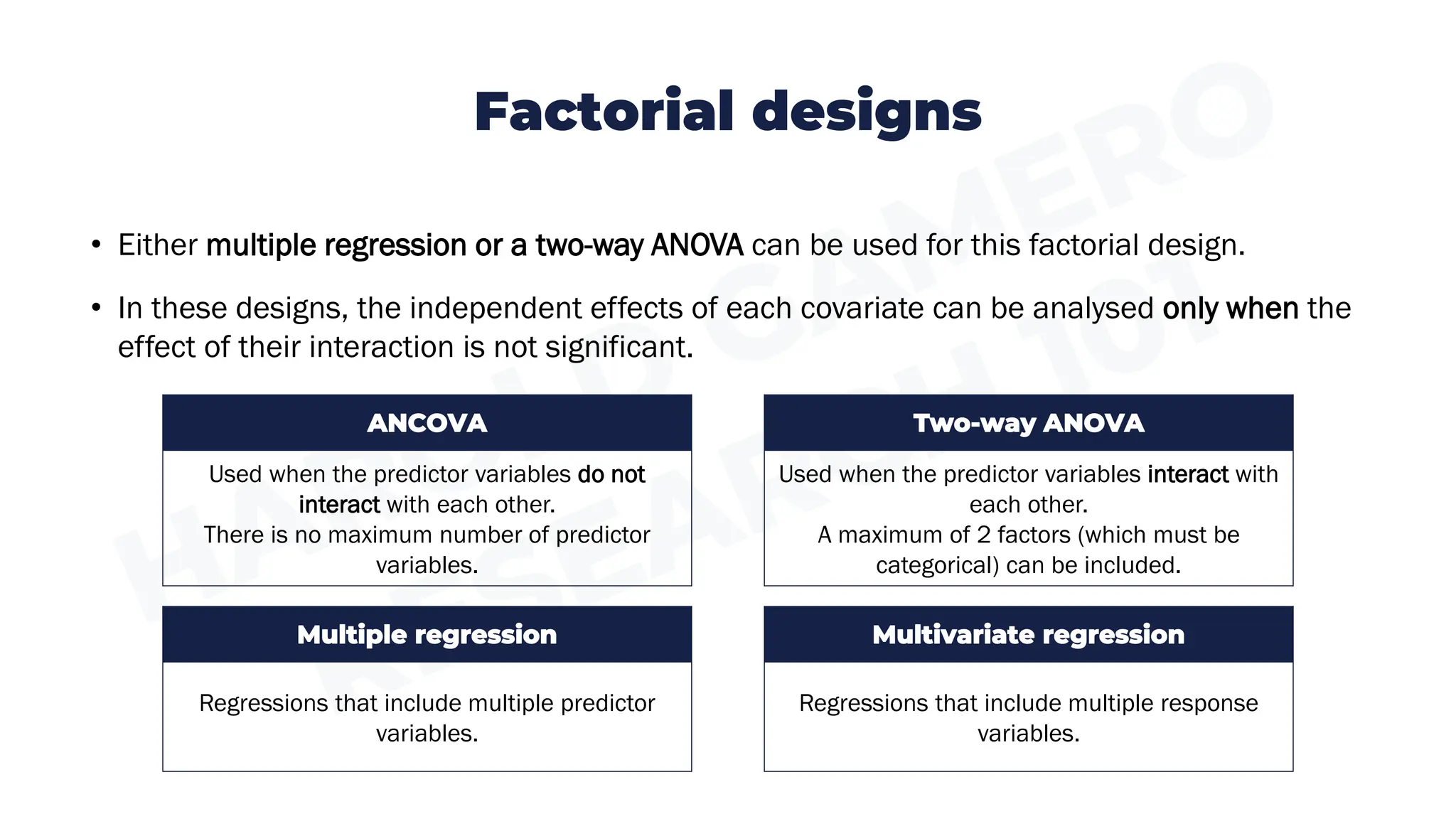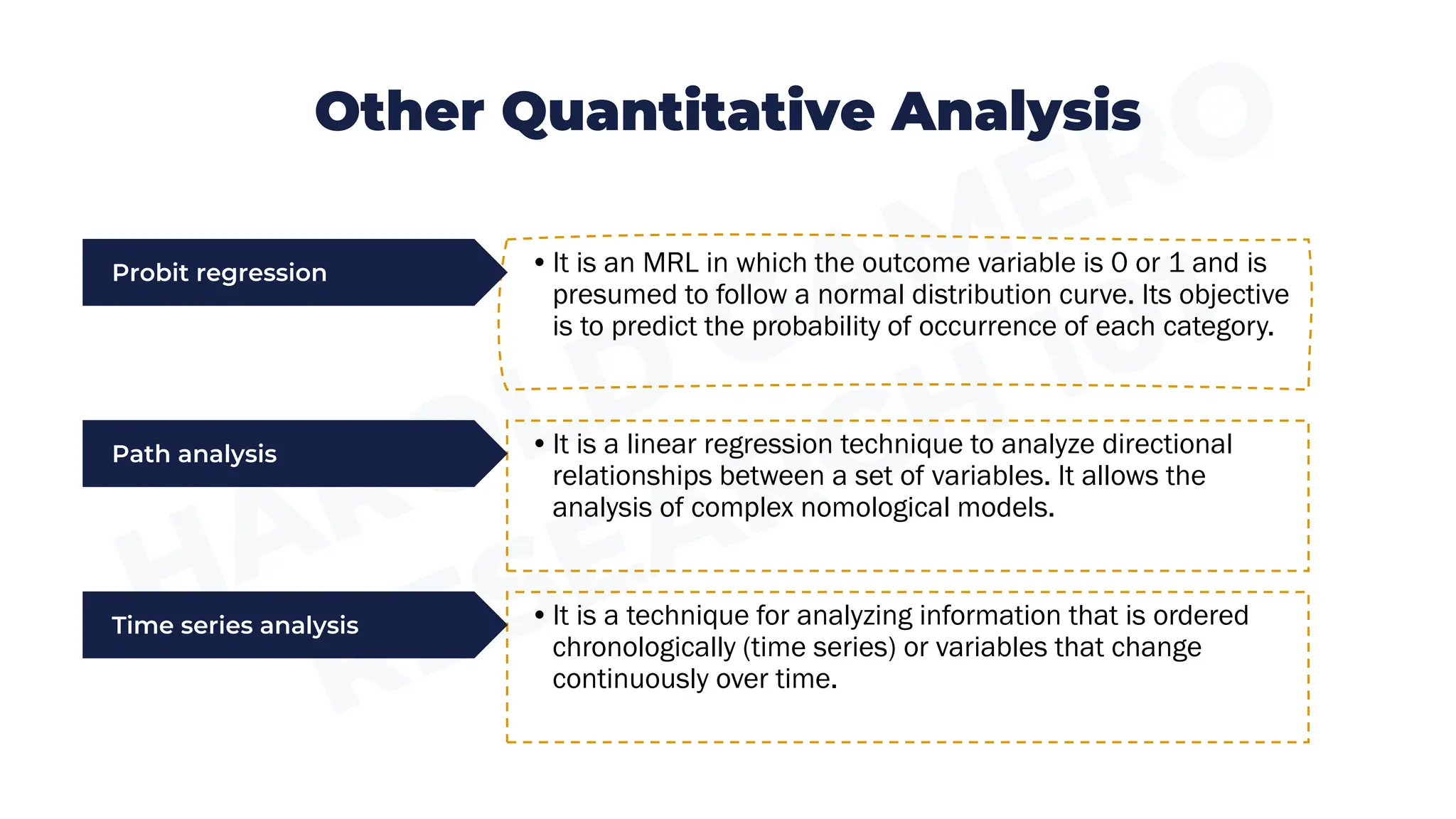This document provides an overview of quantitative inferential analysis techniques, including:
- Inferential statistics are used to test hypotheses and draw conclusions about populations based on sample data, using specialized software.
- Basic concepts include null and alternative hypotheses, significance levels, p-values, and that statistical inferences are probabilistic rather than deterministic.
- Common analysis techniques described are the general linear model, structural equation modeling, ANOVA for comparing groups, factorial designs, and other techniques like factor analysis, discriminant analysis, logistic regression, and path analysis.
















